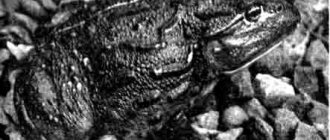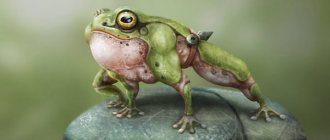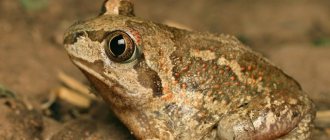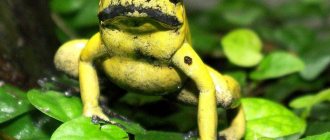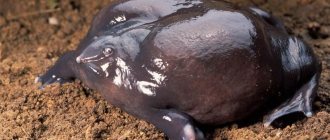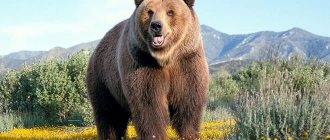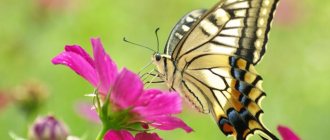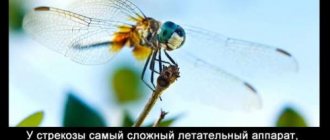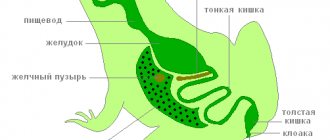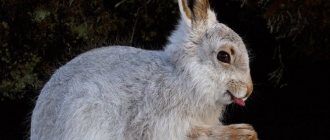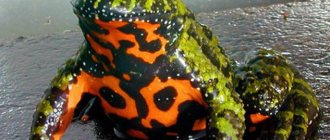There are many amazing animals in the world, and the bullfrog is direct proof of this. People's interest grew sharply thanks to a photograph captured by a photographer in which a mouse's face was peeking out of its mouth. The animal lives in the eastern part of North America and can be seen on the shores of bodies of water that are overgrown with dense vegetation. In terms of dimensions, the amphibian is quite large, and the body length can be more than 20 centimeters , while the weight reaches half a kilogram .
REPRODUCTION
During the mating period, the bullfrog exhibits three types of male behavior. The oldest and largest of them choose areas that are most favorable for laying eggs and vigilantly guard them. Females prefer to mate with large males, so they are in their territory. Young small males join the large male and often intercept the females attracted by him. In addition, they can use free areas until a larger opponent appears on them.
During clashes that occur between males, the large male wins. The presence of several types of mating behavior weakens competition between males. The largest females lay 20 thousand eggs, and the smallest ones - 6 thousand. The clutch of a bullfrog has the shape of a surface film. Tadpoles develop until mid-autumn.
Deadly delicacies. African bullfrog.
In Namibia, it is a common practice to cook with giant African bullfrogs. Almost every part of these huge amphibians is eaten. However, eating these frogs during the breeding season can have very serious consequences. Locals call the disease caused by poisoning Oshiketakata. Its symptoms include burning in the urethra and even kidney failure. Namibians eat dry wood from the Omuhongo tree as an antidote. This tree is believed to neutralize the poison of the African bullfrog. In some areas, there is an opinion that during poisoning you need to urinate on a hot clay pot, and the disease will go away. The homeland of this wonderful frog is North America. But in the last century it was brought to Asia. Here it is bred in frog farms, as its legs are considered a delicacy. It can also be found in the wild.
The bull frog is several times larger than frogs and even toads that live in the territory of the former USSR. Its weight can reach 1 kg. But still, the “average” bull toad weighs 600-700 g. The body can reach 20 cm in length. Females are larger than males.
If you want to see a bullfrog in its natural habitat, then go to the shore of a pond, lake or swamp. Their location can be determined by the sounds they make. But these sounds are in no way similar to the usual croaking. It resembles the mooing of a bull. Moreover, this mooing can be so loud that it can sometimes be heard a kilometer away!
In appearance, these amphibians look clumsy, but they can move quite quickly and dexterously. The bull toad is very gluttonous, so it always has a very good appetite. Her diet is very varied - she can eat anything. Starting from small insects (mosquitoes, flies, spiders) to snakes! She is not averse to feasting on locusts and birds (sparrows and other small songbirds). Sometimes she even grabs ducklings from the surface of the water. He often drags chickens from the farm.
Can easily catch small small fish, lizards, other amphibians and small rodents. Adult bullfrogs can eat their younger relatives. But the most interesting fact is that even bats were found in her stomach. How she managed to catch them is a big mystery.
Active at night. They go out to look for food at sunset. Bullfrogs' main method of hunting is ambush. They can hide in the grass if they hunt on land, or in algae if they hunt in water. During the day they rest. Breeding usually begins during the rainy season. Males determine their area in the pond and defend it from rivals. Then they begin to call the females with their mooing. During the mating season, this mooing can be heard for several days in a row, which local residents are very unhappy with. After mating, the female lays eggs in several passes. One female usually lays from 15 to 19 thousand eggs. This is where the bullfrog's parental responsibilities end. After a few days, the eggs hatch into small tadpoles. They will turn into a bull toad only after two years. But only a fifth of all tadpoles survive until this time - the rest become victims of fish and other inhabitants of the reservoir. The lifespan of this toad can reach 9 years.
LIFESTYLE
The bullfrog usually sits motionless in the water, and only its nostrils and spherical eyes protrude to the surface. The eyes of the bullfrog with horizontal slitted pupils are protected by movable eyelids, which do not allow the cornea to become contaminated.
Special glands maintain eye moisture, which is important, first of all, while this frog is on land. All frogs have well-developed hearing. They have no outer ear, only a middle and inner ear. The large eardrum of these frogs is located behind the eye. The bullfrog has large eardrums that are as big as its eyes. The olive-brown or olive-green body is covered with large dark brown and black spots and perfectly camouflages the frog among aquatic and coastal vegetation.
Poison frog coca
Another miniature representative of amphibians comes from the jungles of Colombia. Another name for this frog, which aptly describes both its appearance and lifestyle, is the spotted dart frog. This strange frog has gained bad fame thanks to its unusually toxic venom, which is several thousand times stronger than the venom of one of the most dangerous snakes - the rattlesnake. Until now, scientists have been unsuccessfully trying to find an antidote to it. The poison is produced in the skin of the frog, in special glands, and is released when touched. The body of just one frog is capable of producing an amount of poison that can kill one and a half thousand people. Well what can I say, be careful in the jungles of Colombia!
WHAT DOES IT EAT?
The bullfrog is known for its gluttony. She usually hunts at night. The bullfrog willingly eats the prey it catches underwater. Having caught prey, she jumps into the water with it and only there begins her meal. Due to the considerable size of the animal, the diet of this frog is very diverse. She can hunt small fish, insects and even eats her smaller relatives. The bullfrog's frequent prey includes small mammals, chicks, snakes, and small alligators. The bullfrog hunts all small animals and eats everything it can catch. Bullfrog tadpoles feed primarily on algae, bacteria that live in the water, and the remains of dead fish.
Hairy frog
This unusual species of frog was discovered in Gabon, in central Africa, in the early 20th century. The peculiar hair on the back of males is an extension of the skin; blood circulation occurs in them, and nerve endings are also located in them. It is believed that these conditional hairs are a kind of respiratory organs of the male frog, and by increasing the surface of the body, they help to increase metabolism.
INTERESTING FACTS
- Most species of frogs immediately leave the spawning area after spawning. There is an opinion that the male bullfrog remains close to the eggs, protecting the larvae from attacks by enemies.
- A bullfrog was once observed to catch and eat a bat that was flying low over the water. In the terrarium of the Pretoria Zoo (South Africa), an African bullfrog swallowed 16 small cobras at one time.
- Males of different species of frogs make special sounds to which females of the same species respond. Thanks to this, their territories can easily intersect, and interbreeding of individual species does not occur.
Habitat and mating song
The habitat of frogs is swamps, calm rivers, lakes and stakes. For most animals and people, their proximity is unpleasant, and the point is not even that this is an extremely voracious amphibian. When mating season comes, the males just go crazy and make very loud noises. The volume of their singing can reach 95 decibels , which is comparable to the noise of a jackhammer. This sound can be heard even at a distance of 1 kilometer.
Its natural range is Lithobates catesbeianus , and was previously limited to only the east coast of North America.
They began to be widely consumed as food in the 20th century. Due to industrial interest, they began to be bred on the North American continent, South America, and Southeast Asia. Such changes in the habitat upset the balance in nature, and the amphibian began to actively destroy all living things that it could cope with.
CHARACTERISTIC FEATURES OF THE BULLFROG
Leather:
These frogs shed like snakes. With their mouths they tear off the skin from the body and eat it.
Size:
Unlike other frogs, the male bullfrog is larger than the female.
Eyes:
under the moving eyelids there are special glands, the secretion of which protects the cornea from drying out.
Legs:
muscular hind limbs and fingers, have well-developed swimming membranes that help her jump long distances.
— Habitat of the bull toad
WHERE IT LIVES
The bullfrog's primary habitat was eastern North America. Later it was introduced to some islands in the Caribbean, and then to Europe. Nowadays it is common in northern Italy.
PROTECTION AND PRESERVATION
Man contributed to the expansion of the range of this frog. In the places where she lives, she faces the threat of destruction of the natural environment.
Food and water
These large frogs are true carnivores. A healthy bullfrog diet consists of gut-loaded crickets (crickets that are fed a nutritious diet that is passed on to your pet), mealworms, and other available insects.
This also includes small rodents such as mice and rats called fuzzies, and even other smaller amphibians.
Stay away from grocery store meats such as chicken and beef. This muscle meat does not provide the frogs with the same nutrition as whole foods.
Young frogs usually eat daily or every other day, while adults eat two to three times a week. Place food in a shallow dish or on a flat stone.
It is best to change what is on the menu at each feeding to a varied diet that mimics what they get in the wild. Also, don't overfeed these voracious eaters.
Consult your veterinarian to determine how much to feed at each meal, depending on the age and size of the frog. Finally, you can offer small dishes in addition to the aquarium water if you wish.
THE BIGGEST FROG IN THE WORLD. Video (00:01:52)
THE BIGGEST FROG IN THE WORLD The largest frog in the world has been found - a toad! Frog monster! The huge, scary, largest frog toad was found in clear waterfalls and rivers. It is officially recognized as the largest in the World. Scary at first glance, it is not dangerous to people. But even the biggest frog has his enemies. These are huge snakes. For a huge, scary snake, this is ideal prey. But the main danger for the largest frog is man. Watch the video: the largest frog in the World.
Transparent or glass frog
The length of this small strange frog, found in the Mexican state of Chiapas, is only 2 cm. All the insides are clearly visible through the colorless skin of the abdomen, which is why it is also called glass. This species of amphibian hunts at night, eating small insects. The transparent frog lays eggs on the leaves of bushes hanging over the water so that the hatched tadpoles can immediately get into their native element.
Sharp-nosed tree frog
The unusual nose of this species of frog, native to New Guinea, gives it a funny appearance. But this is not just a whim of nature. This nocturnal hunter is forced to hide in crevices during the day, leaving only her thin, curved, hard nose on the surface. It is beyond the power of small predators, or even humans, to pull a frog out of its hiding place.
Goliath frog
A rather rare species of amphibian that lives in West Africa. The frog's long body reaches 30 cm, and its weight is an incomprehensible 3.5 kg. The largest specimen caught in Angola was 40 cm long. This giant among tailless amphibians loves clean running water saturated with oxygen. The goliath's diet consists of newts, small frogs, tadpoles, mice and lizards. Local residents, in turn, happily hunt this amazing frog, which threatens the safety of the species.
Notes
- ↑ 12
Life of animals. Volume 5. Amphibians. Reptiles / ed. A. G. Bannikova. — 2nd ed. - M.: Education, 1985. - P. 102. - 399 p. - ↑ 1 2 Ananyeva N. B., Borkin L. Ya., Darevsky I. S., Orlov N. L.
Five-language dictionary of animal names. Amphibians and reptiles. Latin, Russian, English, German, French. / under the general editorship of academician. V. E. Sokolova. - M.: Rus. lang., 1988. - P. 121. - 10,500 copies. — ISBN 5-200-00232-X. - ↑ 12
Bullfrog // Great Soviet Encyclopedia: [in 30 volumes] / ch. ed. A. M. Prokhorov. — 3rd ed. - M.: Soviet Encyclopedia, 1969-1978. - [www.krugosvet.ru/enc/nauka_i_tehnika/biologiya/BESHVOSTIE_ZEMNOVODNIE.html Tailless amphibians] // Encyclopedia "Round the World".
